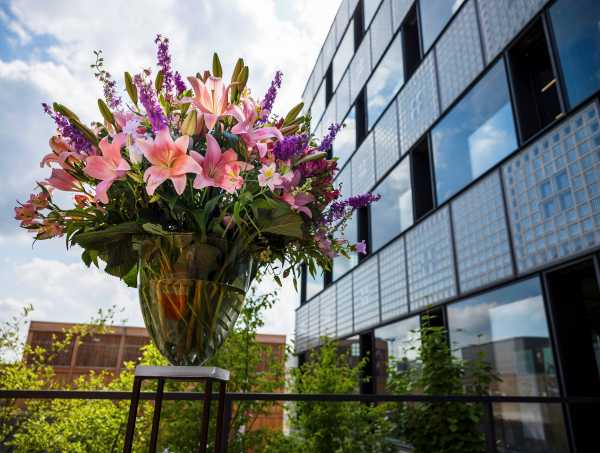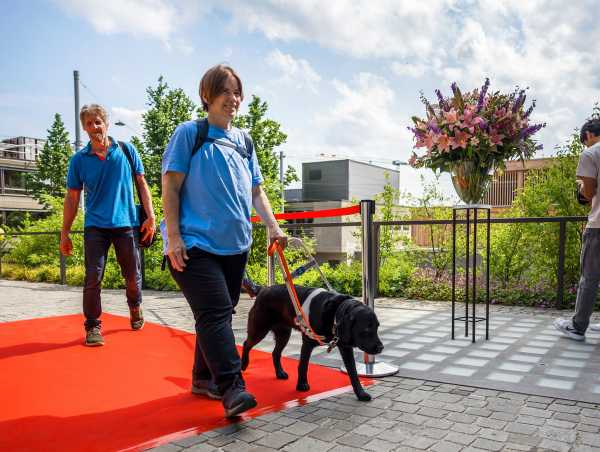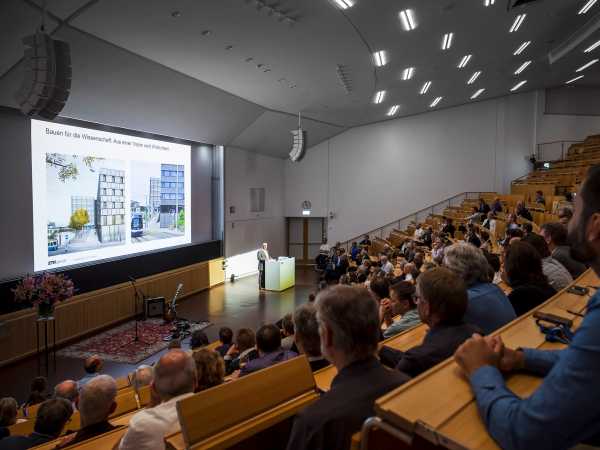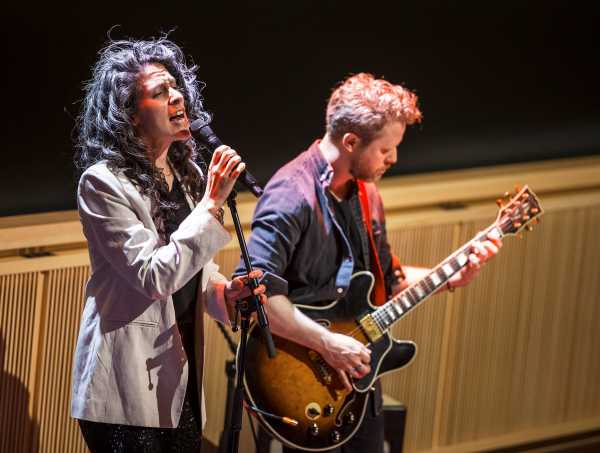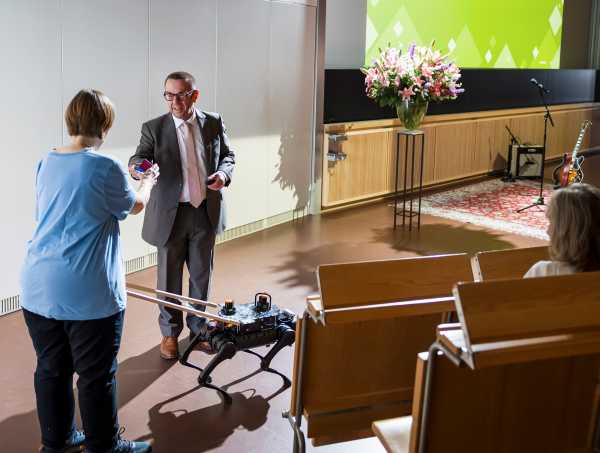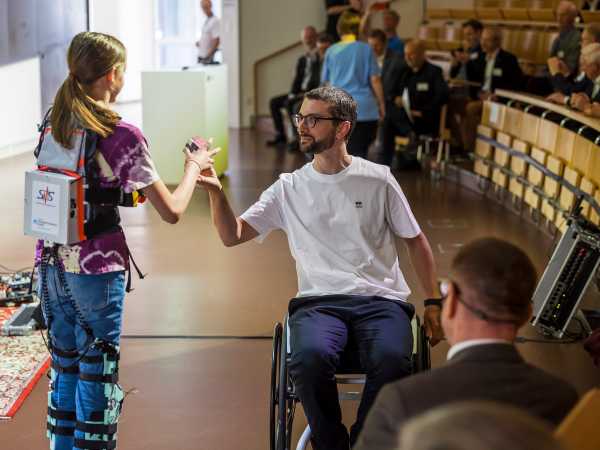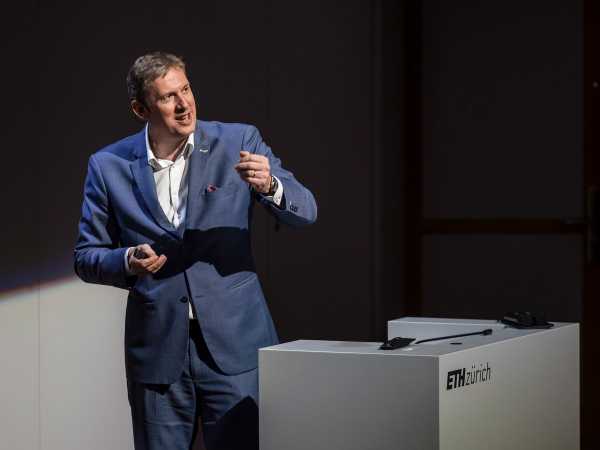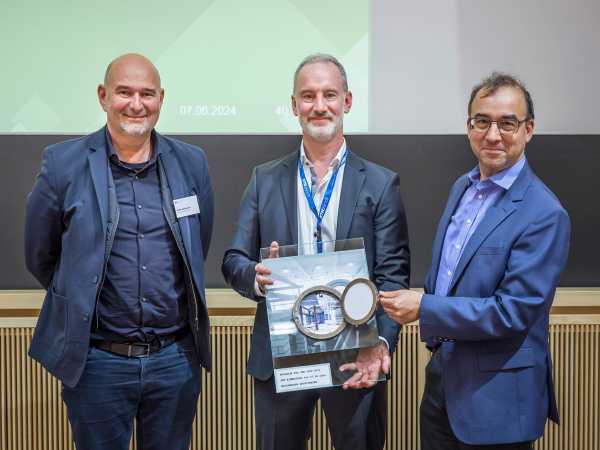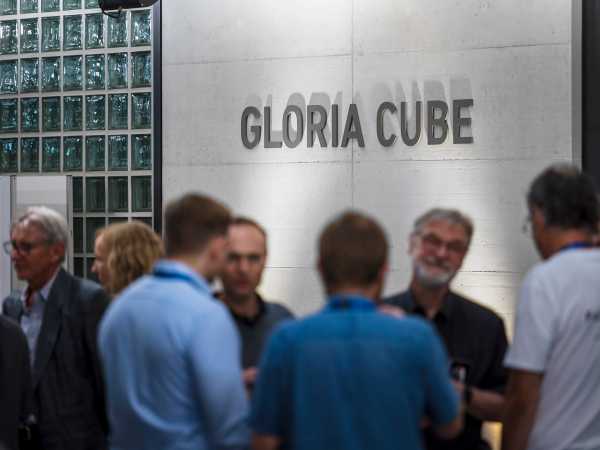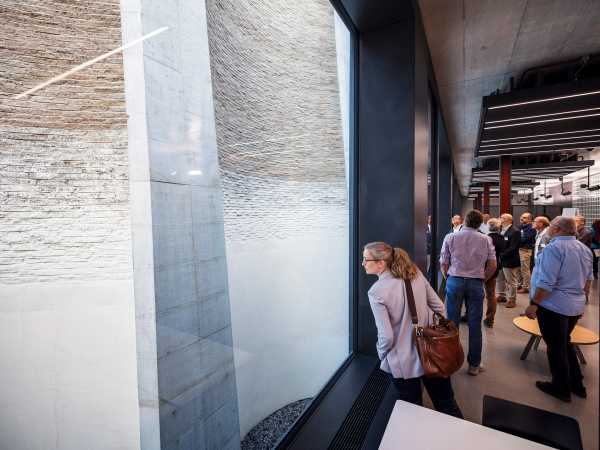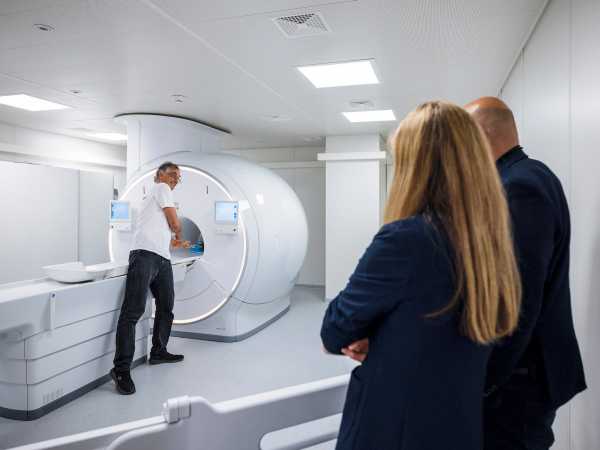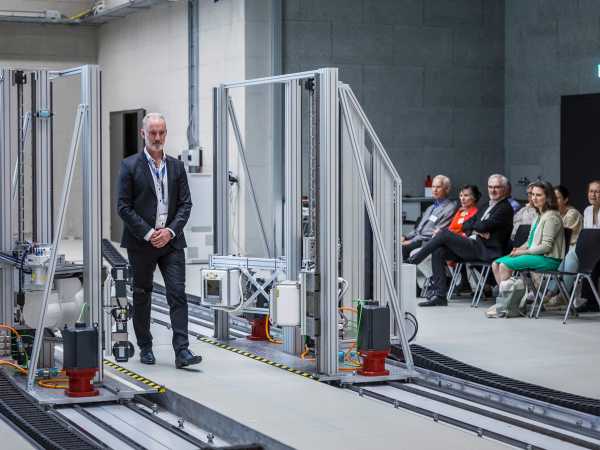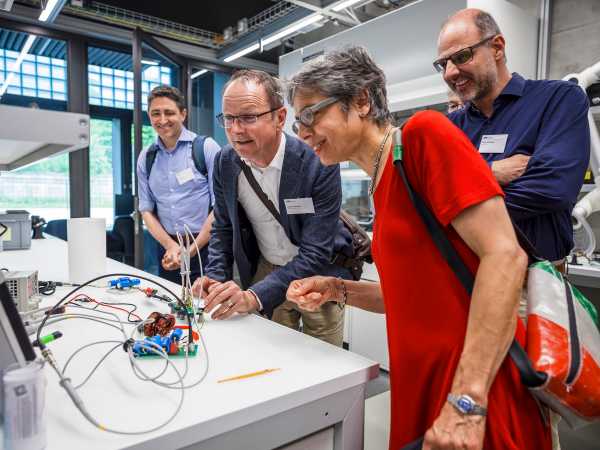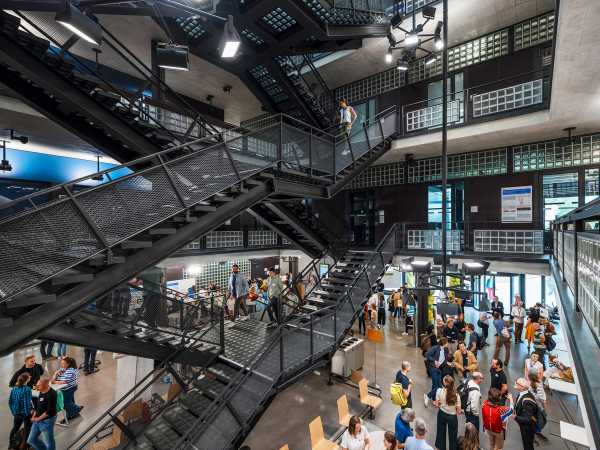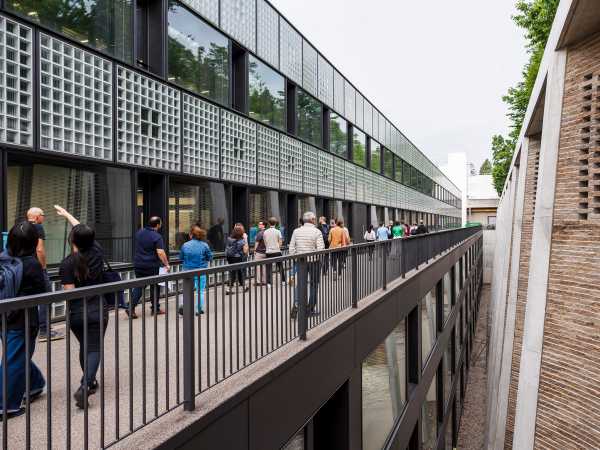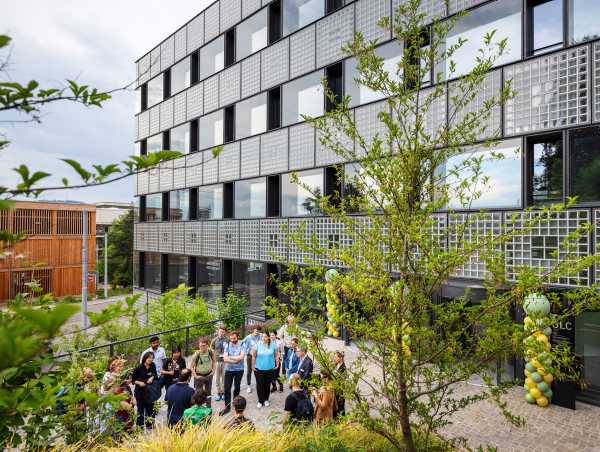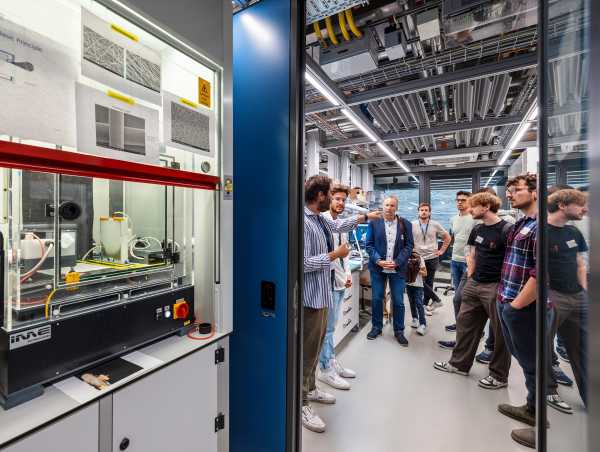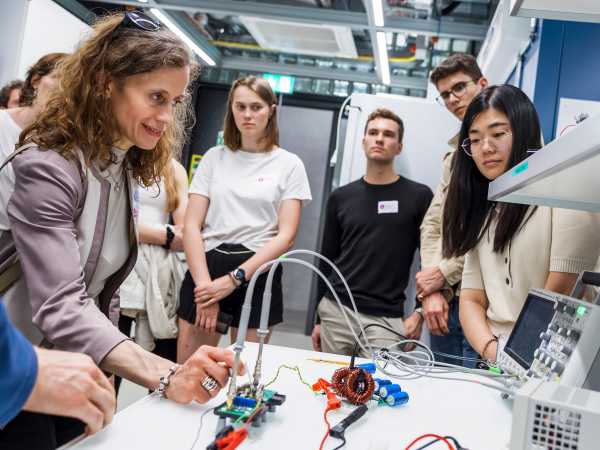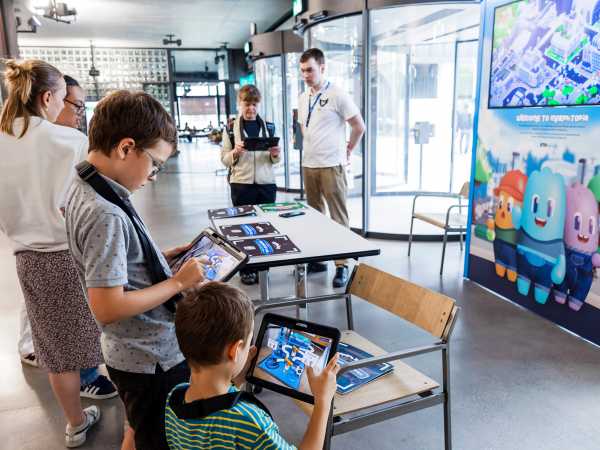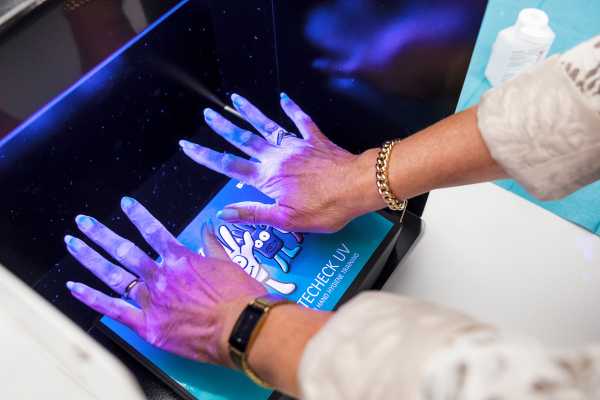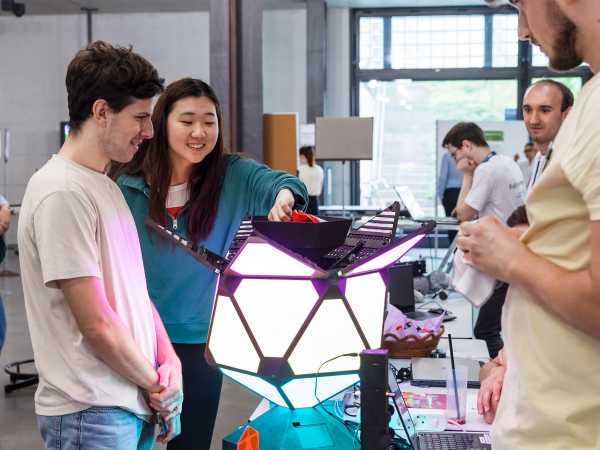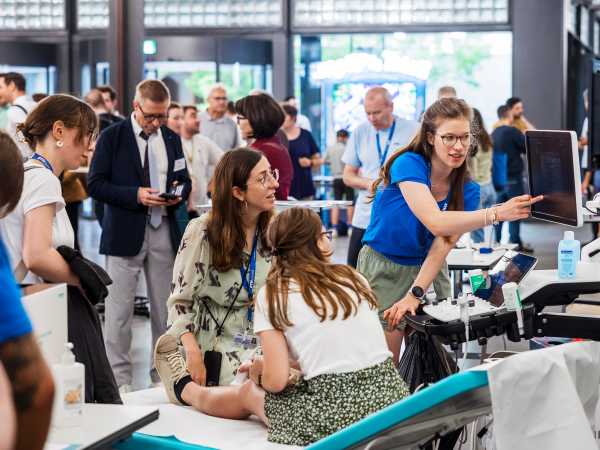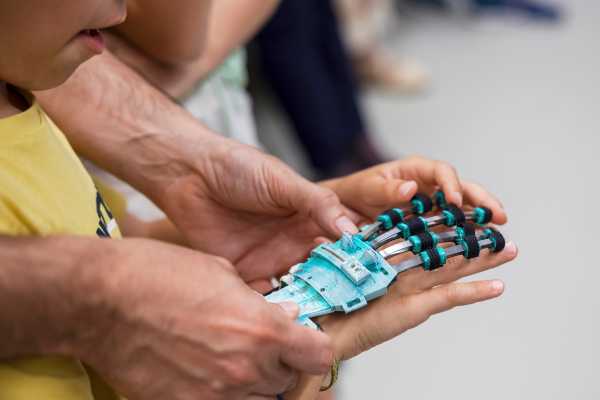The Gloria Cube is ETH Zurich's newest building in the Zurich City university district. Teaching, research and translation are all carried out in the service of health and medicine here. At the end of last week, ETH Zurich celebrated the laboratory and research building's inauguration.
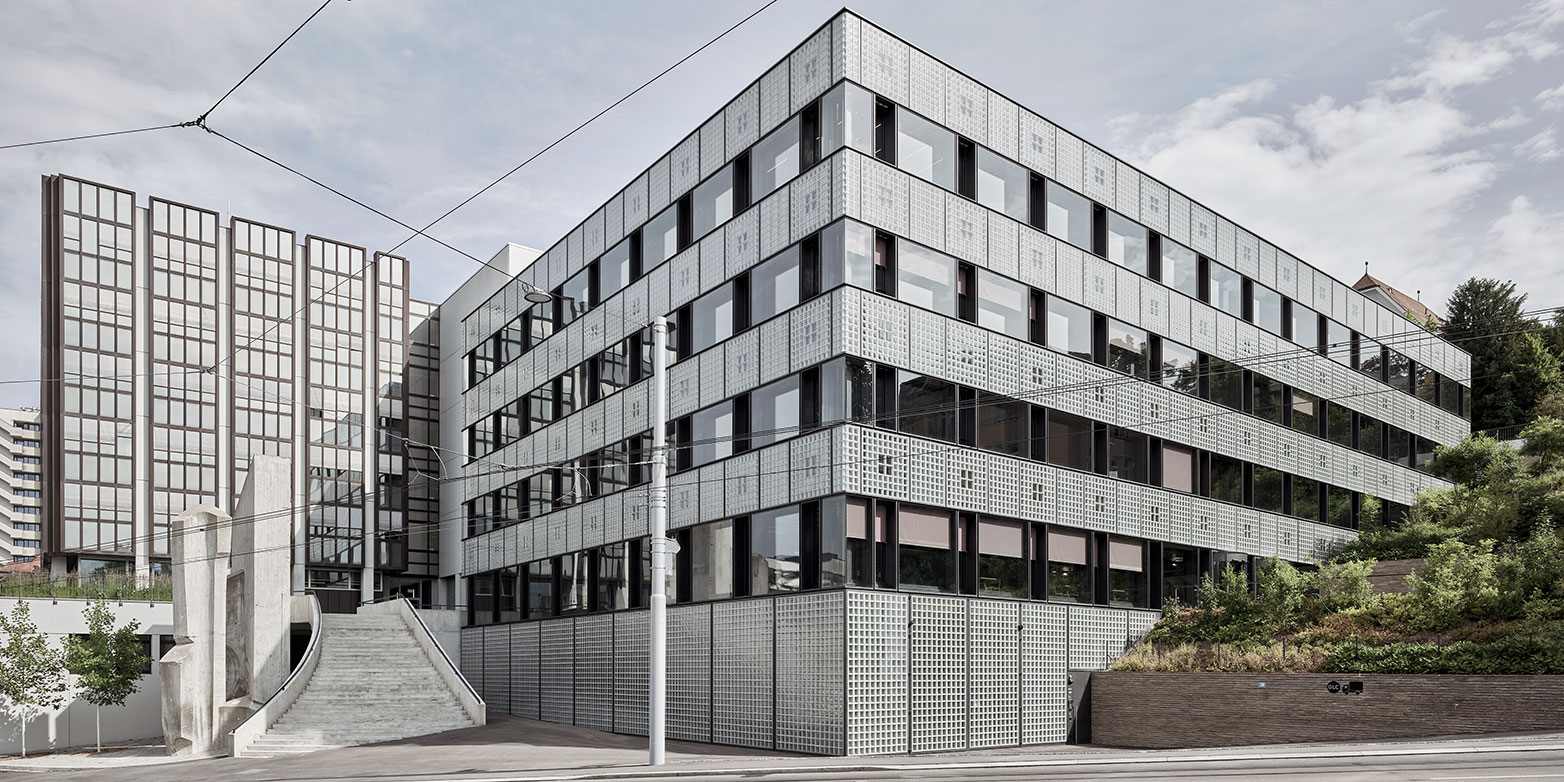
In brief
- The Gloria Cube is an ETH Zurich laboratory and research building for Health Sciences and Biomedical Engineering.
- The new building is located in the direct neighbourhood of the University of Zurich and the University Hospital Zurich, making it a natural destination for education, research and translation in the field of health and medicine.
- The building has a characteristic façade of cubic glass blocks and convinces with its urban planning solution for the ETH campus, the university district and the transition to the residential neighbourhood.
Gloriarank is home to the Gloria Cube, ETH Zurich's newest building. Health Sciences and Biomedical Engineering have moved into the area, where the ETH campus connects to the Fluntern residential district. A total of 16 research groups from the fields of Human Movement Science and Sport, Rehabilitation and Biomedical Engineering, in addition to application-oriented, translational research are working in the building.
In the Gloria Cube, for example, ETH researchers are developing new micro-active ingredient carriers that can be targeted to the specific site of a disease in the body. They are also working on new training methods that improve athletic performance and health. And they are researching how pupil size changes depending on stress or mental health and how this knowledge can be applied to reduce stress by using pupil-based biofeedback (see video 1).
Eight floors are available to the researchers for seminar and training rooms, laboratories and offices. Half of the floors are underground, putting the top floor at the same height (496 m above sea level) as the gardens of the residential buildings above.
From the lab to everyday life
The Gloria Cube was built to provide an inspiring environment for students and researchers to think and work. Its central location in close proximity to University Hospital Zurich and the University of Zurich makes it a natural destination for interdisciplinary collaboration and translational research that turns research results into medical applications and makes them available to patients. As a result, ETH Zurich has set up a technology platform for human medical research in the Gloria Cube: the Digital Trial Intervention Platform provides ETH researchers with infrastructure and a team to clinically test new treatment approaches and develop new medical solutions.
The other way to put research expertise into practice is through education. The Gloria Cube contains six seminar rooms and an innovative learning centre for this purpose: Skills Lab @ETH is a practice-oriented learning and training space where medical students teach one another basic medical skills - such as the use of ultrasound technology.
With its inauguration, the Gloria Cube has now found the medical purpose it was intended for in 2011. That year, ETH announced the winning project by Boltshauser Architekten, which emerged from a pool of 69 proposals. One year later in 2012, ETH Zurich founded the Department of Health Sciences and Technology (D-HEST), which today has 11 professorships in the Gloria Cube.
Opening with a celebration and a public event
The new building was officially inaugurated on Friday and given its new name. On the previous Thursday, an estimated 300 people from ETH Zurich and the surrounding neighbourhood accepted the invitation to attend a public event. In various laboratories and at interactive scientainment stands, they got a glimpse of how modern health and medical research works.
Impressions of the inauguration ceremony
The inaugurational act: ETH Vice-President Christian Wolfrum unveils that the new building is now called the "Gloria Cube" and explains the building's importance for research.
Architect Roger Boltshauser (left) presents the two Heads of Department, Bill Taylor (centre) and Jürg Leuthold (right), with a gift reminiscent of the earlier buildings on Gloriastrasse.
Mounted during the inauguration ceremony: The lettering of the building's name.
The imposing, arched slope load-bearing structure at the rear of the Gloria Cube.
The further development of magnetic resonance imaging is one of the research fields at the Gloria Cube.
The movements of the knee joint are examined in Bill Taylor's laboratory (who is walking in the centre). Among the guests: Andreas Hauri and Simone Brander from Zurich City Council (in the first row of seats).
Simone Schürle-Finke's laboratory develops diagnostic and therapeutic systems in the nano and micro range.
The inauguration ceremony took place on Friday, with 160 guests from the worlds of politics, science, architecture and healthcare invited. Speeches were given by Ulrich Weidmann, ETH Vice President for Infrastructure; Christian Wolfrum, ETH Vice President for Research; Roger Boltshauser, architect; Bill Taylor, Head of Department at D-HEST and Jürg Leuthold, Head of the Department of Information Technology and Electrical Engineering (D-ITET), which has five professorships in the Gloria Cube and is also located in the neighbouring ETZ and ETA buildings.
During the inauguration ceremony, the name GLORIA CUBE was mounted on the wall in the foyer to welcome employees and guests. Anyone who enters the building, even outside of parties and events, will experience how education, research and translation strengthen one another.
Impressions of the public event
A pretty garden is laid out in front of the entrance to the Gloria Cube with its typical glass block façade.
Various laboratories in the Gloria Cube were open to visitors from ETH and the surrounding neighbourhoods.
In Simone Schürle-Finke's laboratory, visitors learn how reactive Micro and Nanosystems contribute to the early detection or treatment of diseases. In the interactive game Morph Tales, children learn how artificial intelligence and humans work together to solve research objectives.
Have your hands really been thoroughly sanitised? In the Magic Cube, players solve basic questions about electrical engineering and experience what electrical engineering actually is. Medical students learn how to use ultrasound technology in the Gloria Cube. They also demonstrated this knowledge to the guests at the visiting event.
A hand exoskeleton from Roger Gassert's laboratory.
Architecture with character
The name Gloria Cube (GLC for short) is based on the shape of the building and its location. It alludes to one of the architecture's defining elements: the cubic, translucent glass blocks that not only characterise the style of the façade, but are also repeated in the interior of the building, for example on the stairs and on the ceiling.
Another key feature of the Gloria Cube is the building's compact shape, which does not reach high up into the sky, but connects seamlessly with ETH's existing ETZ building to form a ring-like urban ensemble. This gives the inner courtyard a new quality as a meeting place, further enhanced by the new, Archimedes restaurant which is open to the public. The Paul Scherrer lecture hall will also be meaningfully integrated into this ring, and its use for teaching and events will be improved.
A smart urban planning solution
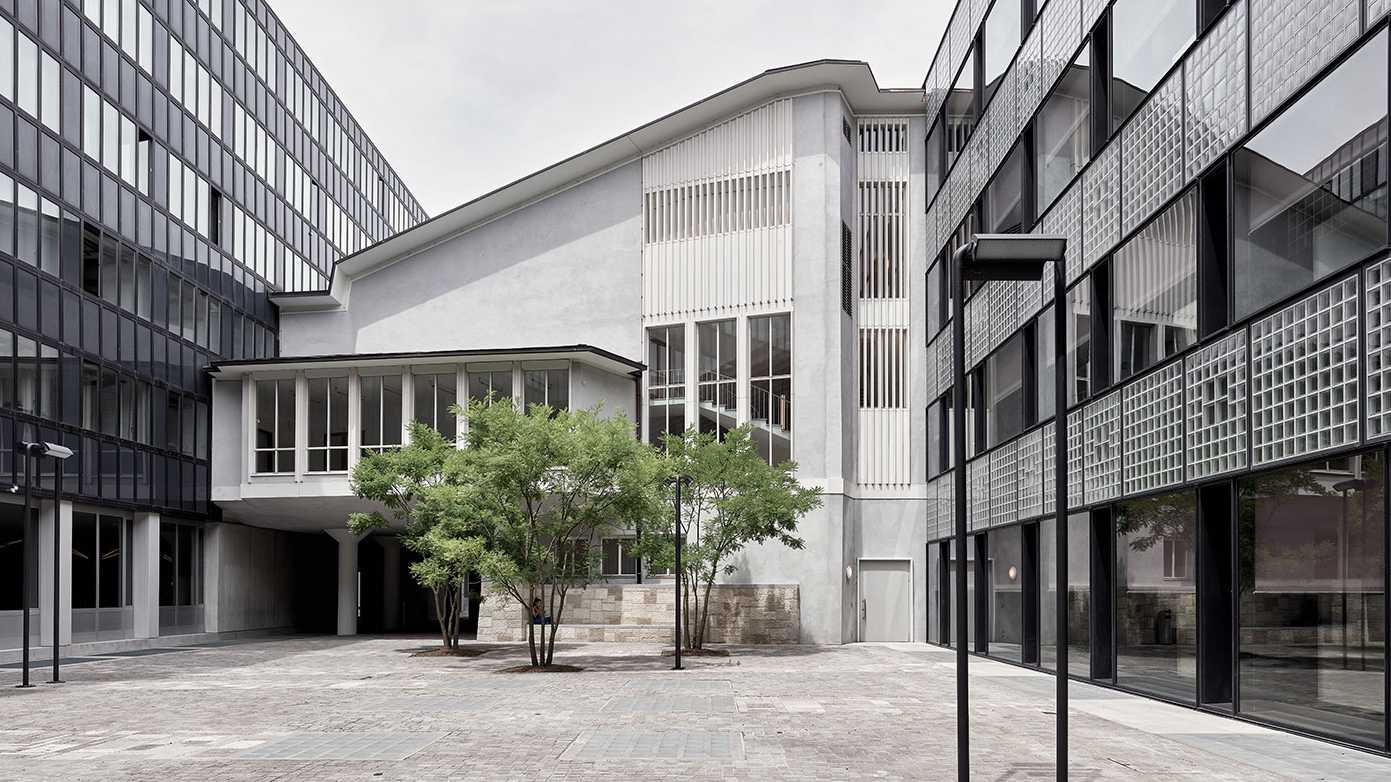
The Gloria Cube is not only a nice finishing touch to the ETH Zentrum campus; it also connects ETH's structures with the residential buildings by means of uninterrupted paths and a green area, creating a neighbourhood-friendly transition from the university to adjacent homes.
The courage of the architects Roger Boltshauser and Armin Baumann is demonstrated by the fact that the Gloria Cube has received both architectural and engineering awards. For example, the jury for the Swiss Architects Award in 2022 praised the urban development approach in particular: "The new GLC laboratory building by Boltshauser Architekten shows that densification in Zurich's university district can succeed. Cleverly interwoven with the terrain and existing buildings, the result is an exemplary new building."

